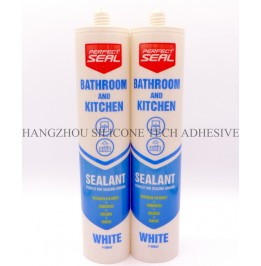When undertaking home renovation or repair projects involving sealants, pet owners face a critical challenge: preventing accidental ingestion of potentially toxic substances. Sealants, commonly used in construction for waterproofing and gap-filling, contain chemical compounds that can pose health risks to animals if licked or ingested. Understanding these risks and implementing preventive measures is essential for safeguarding pets during and after sealant application.

Sealants derive their adhesive and sealing properties from a blend of polymers, solvents, and additives. The toxicity of these materials varies based on their chemical makeup. For instance, polyurethane-based sealants may release isocyanates during curing, which can irritate respiratory tracts and skin. Silicone-based sealants, while generally considered safer once cured, may emit low levels of volatile organic compounds (VOCs) during application, which can cause dizziness or nausea in sensitive individuals, including pets.
Acrylic sealants, another common type, contain acrylic polymers and may include plasticizers or biocides to enhance performance. While these components are typically non-toxic when fully cured, ingestion of uncured or partially cured material can lead to gastrointestinal distress. The curing process, which transforms liquid sealant into a solid state, is critical—uncured sealants remain soft and pliable, increasing the likelihood of pets chewing or licking them.
Pets, particularly dogs and cats, explore their environments through taste and smell, making freshly applied sealants a tempting target. Common high-risk areas include:
Sealants around sinks, bathtubs, and countertops are frequently exposed to moisture, attracting pets seeking water. Cats, in particular, may lick drips or residue during grooming.
Sealants used to fill gaps around windows and doors may emit odors that pets investigate by sniffing or licking. Puppies and kittens, with their curious nature, are especially prone to such exploration.
Sealants applied to flooring joints or baseboards can be stepped on or brushed against, transferring residue to paws. Pets may later lick their paws, ingesting harmful chemicals.
Periodically check sealants for signs of wear or damage, as deteriorating material may release toxins or attract pets to chew. Replace worn sealants promptly using pet-safe products.
Stay informed about the chemical composition of household products, including sealants. Read labels carefully and research ingredients to understand potential risks. Share this knowledge with family members or roommates to ensure collective vigilance.
Keep a pet first-aid kit handy, including activated charcoal (for ingestion emergencies) and contact information for a veterinarian or poison control center. Familiarize yourself with basic first-aid procedures for chemical exposure.
By understanding the risks associated with sealants and implementing proactive preventive measures, pet owners can create a safer environment for their furry companions. Whether renovating a bathroom or sealing a window, prioritizing pet health ensures that home improvements enhance, rather than endanger, the well-being of those who share our spaces.
Copyright 2019 by Hangzhou Silicone Tech Adhesive Co., Ltd. All rights reserved.
Bathroom Sealant | Acrylic Sealant | Dow Corning 795 | Aquarium Sealant | Dow Corning 732 | Clear Silicone Sealant | Polysulfide Sealant | Glazing Sealant | Mirror Sealant | IG Sealant
Powered by Onepound